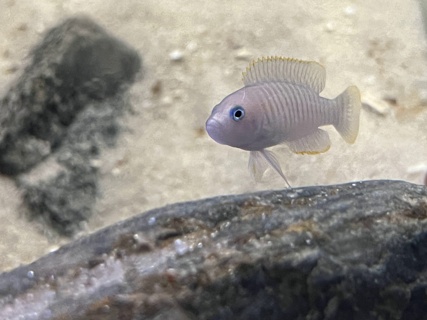Aquarist Species: Neolamprologus multifasciatus
Aquarist: CedarAquatics
Species Profile: Neolamprologus multifasciatus

Species Photo by: Craig Storms
Description: The classic and ever popular 'Multi' shell dweller endemic to Lake Tanganyika. Known for forming dense colonies with adults having a high tolerance for crowding and accommodating young fish and fry. Differentiated from the very closely related N. similis by the absence of stripes on the face.
Category: Cichlids
Global Region: Africa
Distribution: Lake Tanganyika
Aquarist Notes
Genetic Line: Aquarium Strain
Year Acquired: 2023
Multies, one of my favorite species. I keep them in 1-2" apple snail shells, PH is ~7.5-7.8, Temp. 78F and I have some Paracypchromis swimming in the top half of the tank. Provide sand, enough shells for everyone to have their spot, and I have some Texas holyrock/dead coral to provide additional hiding spots for the young fish until they claim their spot.
I grow Valisineria in the tank. I know they're heavy diggers, but when planted with root tabs, they're able to throw roots quickly enough that my taller val holds plenty fine.
Spawning notes:
Species Spawned: Yes
Males/Females do the digging of the shell to prepare for a female to lay eggs. I do see the male doing more digging than the females. After the eggs are laid, I rarely see the male by the shell, and it's usally the mother that does the work.
Have Reared Fry? Yes
Female fish will protect the young by chasing off the other multie that comes by it. The male usually ditches the female to guard the young. They grow slowly, and the first week it's best if you can to feed near the young fry. After about a 1-2 weeks old, they'll start hovering a bit more away from the shell. Which makes it easier for them to catch drifted food and doesn't require so much targeted feeding. I only feed flake food, with crushing it in my hand to make it very fine for them. Occasionally toss in frozen baby brine shrimp.
Young fish available? Yes